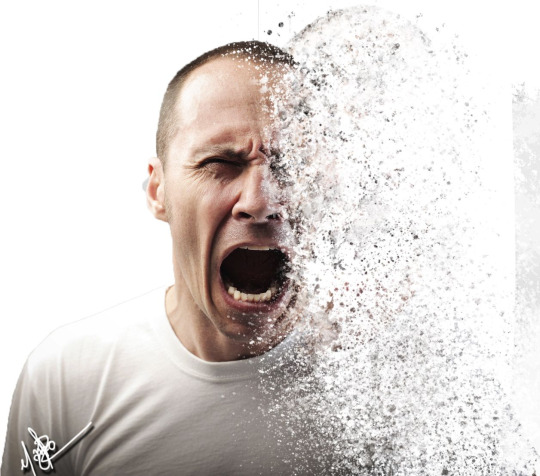#Church of Scotland
Text

At 5000 yrs, the Fortingall Yew Tree is the planet's oldest living thing.
#Fortingall#Perthshire#Scottish Highlands#churchyard#UK#5000 yr old Yew Tree#world's oldest tree#Church of Scotland#natural wonder#gravestones#stone wall#ancient monument
86 notes
·
View notes
Text
Best WLW News Stories of 2022
The state of Tamaulipas voted to recognise same-sex marriage, making it legal in all 32 states.
Jean-Pierre will formally begin following Psaki's last day, which will be May 13. President Joe Biden announced in a statement Thursday, becoming the first Black and out LGBTQ person to hold the position.

The Church of Scotland has voted to allow same-sex marriages, after fresh warnings that its historical opposition had increased the church’s decline towards irrelevance.
The church’s general assembly, its decision-making body, voted by 274 to 136 on Monday to allow its ministers and deacons to opt in to officiate at same-sex weddings, ending a centuries-old prohibition.
The church’s legislation will be updated to remove references to a marriage taking place between a husband and wife, and refer instead to “parties”.
Some ministers said within minutes of the vote that they had immediately applied to be registered to carry out same-sex weddings, including the Rev James Bissett, a chaplain to the Royal Air Force’s air cadets.
Cuba has legalized same-sex marriage after Cubans voted in favor of a family code that increased protections for minorities on the island, the country’s National Electoral Council announced on Monday.
The Electoral Council said 74.1% of those eligible to vote in Sunday’s national referendum had turned out to cast their ballot.
With 94% of the votes counted as of 9am ET on Monday morning, 3,936,790 had voted in favor and 1,950,090 against – signaling an overwhelming support for the new law.
The new family code extends greater protection to women, children and the elderly, as well as allowing LGBTQ couples to marry and adopt children.
Lawmakers in the tiny nation – which has a population of about 77,000 and is smaller than the city of Chicago in land mass – voted unanimously to allow same-sex couples access to civil marriage.
“Today we vote for a law for all, which includes us all, a law of a modern country that ensures the free development of citizenship and bases its success on the most important nucleus of organization, the family, with all its diversity,” said Carles Enseñat, president of the Democratic Parliamentary Group.
The models Fabiola Valentín, Miss Grand Puerto Rico 2020, and Mariana Varela, Miss Grand Argentina 2020, thrilled the world of beauty pageants by not only confirming their relationship, but also revealing that they joined their lives in marriage, on October 28, in an intimate celebration.
Slovenia is the first country in the region that gives same-sex couples the same rights as heterosexual couples. The Parliament passed the amendment with 48 MPs in favour, 29 who voted against and one blank vote, Euronews reports.
The status does not carry the same rights as marriage, but allows LGBTQ partners to be treated as married couples for some public services in areas such as housing, health and welfare.
The Senate passed bipartisan legislation Tuesday to protect same-sex marriages, an extraordinary sign of shifting national politics on the issue and a measure of relief for the hundreds of thousands of same-sex couples who have married since the Supreme Court’s 2015 decision that legalized gay marriage nationwide.
#lgbtq#lesbian#lgbt#slovenia#cuba#andorra#gay#church of scotland#scotland#wlw#bi#girls who like girls#lgbtqia#sapphic#karine jean pierre#politics#year in review#2022#2023
135 notes
·
View notes
Text


On December 10th 1616 the Scottish Privy Council mandated the establishment of publicly funded, Church-supervised schools in every parish of Scotland.
With the good came the bad, he same document commended the abolition of Gaelic, they wrote “That the vulgar Inglish toung be universallie plantit and the Irische language which is one of the cheif and principall causis of the continewance of barbaritie and incivilitie amangis the inhabitantis of the Ilis and heylandis may be abolisheit and removit.” basicallly they said that Gaelic caused "barbarity and incivility amongst the inhabitants of the Isles and Highlands" , but in truth the reformation was in full swing, and while most of Scotland embraced the teachings of the new church, the gaelic speaking majorities in the Highlands and Islands were staunch Catholics.
Don't get me wrong, the law helped set Scotland on the way to becoming one of the most literate nations in Europe in the 18th century and probably paved the way for the Enlightenment, but at what cost? Thankfully the destruction of Gaelic was never carried out to any great extent.
Indeed, the Act itself was fatally flawed, because although its intention was to educate the population from a young age, it did not say exactly how this was going to be done. Nevertheless, it is the starting point of modern Scottish education and should be seen as such.
Before the Reformation, the Roman Catholic Church was in charge of education in Scotland. From the early 12th century, there had been schools for the education of priests, monks and choristers – the choir school of Glasgow Cathedral was founded in 1124 and its modern descendant is the High School of Glasgow.
As Scotland progressed through the Middle Ages, most schools were connected to church establishments – cathedrals, monasteries, abbeys and major churches in the bigger towns. These schools in time became known as grammar schools from the teaching of their main subjects – reading and writing.
It was a haphazard system, with only the teaching of Latin and church dogma standardised. Every school had its own curriculum, usually set by the man in charge of the church establishment who was nearly always intent on preparing boys for church service – there were a few nunneries and they did try to educate girls in subjects such as sewing and embroidery, though a few, a very few, girls did receive more formal education.
Directed by King James IV, who was passionate about education and the arts, the Scottish Parliament passed the Education Act of 1496 which made it compulsory for nobles, property owners, the landed gentry and merchants to send at least their eldest sons to grammar schools from the age of eight.
The king’s idea, backed by the likes of Bishop Elphinstone, founder of Aberdeen University, was that Scotland would have an educated elite able to converse with anyone across Europe which in turn would boost trade, secure better relations across the church, and help maintain political, diplomatic and military links with allies like France. The ordinary folk, the peasants, the poor, remained uneducated.
Come the Reformation and Scotland saw a change in the delivery of formal education. John Knox gets a lot of the credit and no doubt he felt he deserved it. In 1560, Knox's 'First Book of Discipline' outlined a national system for providing a “virtuous education and godly upbringing of the youth of this Realm”. The mechanism was the establishment of parish primary schools, burgh grammar schools, high schools, and new universities; Edinburgh, which was established in 1582 and Marischal College, Aberdeen, in 1593.
The Kirk wanted to ensure that everyone could read the Bible, but its heart was in the right place when it added, “For the poor, if need be, education may be given free.” The result was the setting up of schools in various towns and parishes, but it was no means widespread. Subjects taught were as proposed by Knox and his cronies, namely the Catechism, grammar, classical literature, French, and Latin “if the town be of any reputation.” In the high schools, such as were provided, was taught in addition “the Arts, at least Logic and Rhetoric.”
Fifty-six years after Knox's book and one hundred and twenty years after James IV's act, James VI's Privy Council passed the School Establishment Act of 1616, which mandated that a school be established in every parish. According to the section on the 'Acts of the Parliament and of the Privy Council of Scotland, relative to the establishing and maintaining of Schools' published in 1840, in the 'Miscellany of the Maitland Club', “Thairfoir the Kingis Majestie with advise of the Lordis of his secreit Counsall hes thocht it necessar and expedient that in everie parroche of this Kingdome whair convenient meanes may be had for interteyning a scoole That a scoole salbe establisheit and a fitt persone appointit to teach the same upoun the expensis of the parrochinneris.”
This Privy Council act was neither the first nor the last attempt to sort out the descendants of the Picts, and the Gaels.
It took three more acts of Parliament, in 1633, 1646 and 1696, before a solid foundation was established and schools became sufficiently widespread to be classed as nationwide. At first, success proved elusive, because of Scotland’s relative poverty and the prevailing political and religious circumstances. The 1633 act was introduced to levy a tax on local landowners; to ensure that money was available. The 1696 Scottish Parliament act for 'Setting Schools’ ensured that every parish not already equipped with a school was required to establish a schoolhouse and to provide for a Dominie. By the end of the 18th Century, most parishes in Scotland had at least one school. No accident then, that from the 18th Century onwards, Scotland had one of the highest standards of literacy of any nation in Europe.
The second pic is of a carving of a seventeenth-century classroom with a dominie and his ten scholars, from George Heriot's School, Edinburgh.
Thereis some more info on Scottish education on the University of Edinburgh's web pages here https://www.ed.ac.uk/education/about-us/maps-estates-history/history/part-one
15 notes
·
View notes
Text
what do you mean some people are british AND MORMON you're telling me your holy land pilgrimage is to UTAH?
#ameera speaks#insane to me theres so many forms of christianity in england just pick one of them#church of england#church of wales#church of scotland#idk
5 notes
·
View notes
Link
#religion#christianity#protestantism#church of scotland#lgbtq#marriage#wedding#scotland#article#divinum-pacis
63 notes
·
View notes
Text
I’m not a royalist by any means, but the Queen has been the one constant in my life. Her children are mirrors of her parenting, which, in my opinion, was very humble.
I was fortunate enough to get to meet Prince Edward when he was Lord High Commissioner to the Church of Scotland General Assembly and I was a Youth Rep. He spoke to some of us about Jelly Babies, and was gracious to accept our invitation for Lady Louise to join us the Youth Assembly when she was old enough. Unfortunately, the Youth Assembly had folded before Lady Louise was old enough. But I am grateful for having met him and seeing his mother’s love for Scotland reflecting from him.
3 notes
·
View notes
Text
PROPHETS OF FRAGMENTATION
In the West we live in a culture which teaches us to scorn what was once considered normal and to value and praise that which only yesterday was thought to be abnormal or even dangerous. Those things which once bound us together, such as love of country and tradition, are despised and those things which force us apart such as multiculturalism and the transgressive are held up as ultimate…

View On WordPress
0 notes
Text
A Sturdy Bridge Over The Deadly Sea
Neal Pollard
The Tay Bridge in Dundee, Scotland, opened for passenger services on June 1, 1878. That very summer, Queen Victoria was a passenger onboard the train that passed over that bridge, at the time at over a mile and a half the longest railway bridge in the world. This led her to knight the bridge’s builder, Thomas Bouch. But on Saturday, December 28, 1879, the bridge collapsed in a…

View On WordPress
#Church of Scotland#Dundee#gangrene#preachers#Queen Victoria#reading#Sabbath#Scotland#study#Tay Bridge#Thomas Bouch#understanding#workmen
0 notes
Photo

St Marks, Aberdeen - Scotland
#Aberdeen#Church#church of scotland#Art#digital sketch#digital art#art on the internet#art of tumblr#sketch#architecture
0 notes
Text
Princess Anne endorses Church of Scotland-Catholic agreement
Princess Anne has officially endorsed a historic friendship agreement between the Church of Scotland and the Catholic Church in Scotland.
Anne, the Princess Royal, formally signed the St Margaret’s Declaration at Dunfermline Abbey in Fife. The Rt Rev Dr Iain Greenshields, Moderator of the General Assembly and the Most Rev’d Leo Cushley, Archbishop of St Andrews and Edinburgh co-signed the…
View On WordPress
#Archbishop of St Andrews and Edinburgh#Church of Scotland#Moderator of the General Assembly#Most Rev&039;d Leo Cushley#Princess Anne#Rt Rev Dr Iain Greenshields#St Margaret’s Declaration#The Princess Royal
1 note
·
View note
Text

Modern art meets ancient stone in Britain's northernmost cathedral
#St Magnus Cathedral#Kirkwall#Orkney Islands#sandstone#Church of Scotland#saint's relics#stained glass#sacred space
126 notes
·
View notes
Text
Church of Scotland general assembly votes to allow same-sex marriages | Anglicanism | The Guardian
The Church of Scotland has voted to allow same-sex marriages, after fresh warnings that its historical opposition had increased the church’s decline towards irrelevance.
The church’s general assembly, its decision-making body, voted by 274 to 136 on Monday to allow its ministers and deacons to opt in to officiate at same-sex weddings, ending a centuries-old prohibition.
The church’s legislation will be updated to remove references to a marriage taking place between a husband and wife, and refer instead to “parties”.
Some ministers said within minutes of the vote that they had immediately applied to be registered to carry out same-sex weddings, including the Rev James Bissett, a chaplain to the Royal Air Force’s air cadets.
#church of scotland#same sex marriage#pride#lesbian#lgbtq#lgbt#gay marriage#happy pride 🌈#lgbtqia#sapphic#girls who like girls#wlw#bi#gay
20 notes
·
View notes
Text


On 22nd May, 1968 the General Assembly of the Church of Scotland voted in favour of women ministers, decades before the Church of England.
Six women Margaret Forrester Claude Barbour, Elizabeth Hewat, Mary Levison , Mary Weir and Sheila White wrote an open letter campaigning for a change to the Kirk’s rules on women ministers.
Their campaign met fierce resistance and anger but on 22 May 1968, the Kirk’s General Assembly finally voted to allow women to be ordained.
By the following year, the Reverend Catherine McConnachie was ordained and served as assistant minister at St George’s Tillydrone, in Aberdeen.
The Reverend Effie Irvine, who died in February 2018, was the first to be ordained as a parish minister in 1971 at Milton of Campsie Parish Church. Nowadays around a third of The Church of Scotland Ministers are women. I read an article in 2018, the 50th anniversary of the landmark decision that, ‘Pockets of resistance’ against appointing women ministers and elders still exists in parts of Scotland and I imagine John Knox, hero of the Protestant Reformation in Scotland will still be turning in his grave, he wrote ‘The First Blast of the Trumpet Against the Monstrous Regiment of Women’ in 1588, attacking female monarchs, arguing rule by women was contrary to the bible.
The first female Moderator was appointed in 2004, there has now been 4 in total, it took a furth 36 years before the first, Alison Elliot in 2004, this year will see the fifth woman moderator when Rev Sally Foster-Fulton, as seen in the second pic, takes the position. Sally, who is head of a Christian charity which fights global poverty, said last week, she is "beyond humbled, inexpressibly honoured and more than a wee bit excited" to represent the Church in this role.
There are currently 218 serving female ministers, with 677 male ministers
You can read more about this on an excellent blog piece here
#scotland#scottish#church of scotland#womens rights#womens suffrage#womens education#religion#history
17 notes
·
View notes
Text



i loved you so much it was making me sick
#red vs blue#rvb#rvb fanart#rvb tex#agent texas#rvb church#leonard church#freshly minted#me fighting for my life trying to figure out what tags people use. ok.#anyway the relevance of going to scotland to this moment or this art is questionable at best but u just need to trust in my beautiful mind#what i was mostly thinking about is what tex would look like. and then what epsilon tex specifically would look like. and coming to the#conclusion that i dont think i will ever come up with a face for her. always just a hint of something blurred through the glass.#i love you deadalive nothing girl who isn't.
528 notes
·
View notes
Text

Saint John's Episcopal Church, Edinburgh, SCOTLAND
1K notes
·
View notes